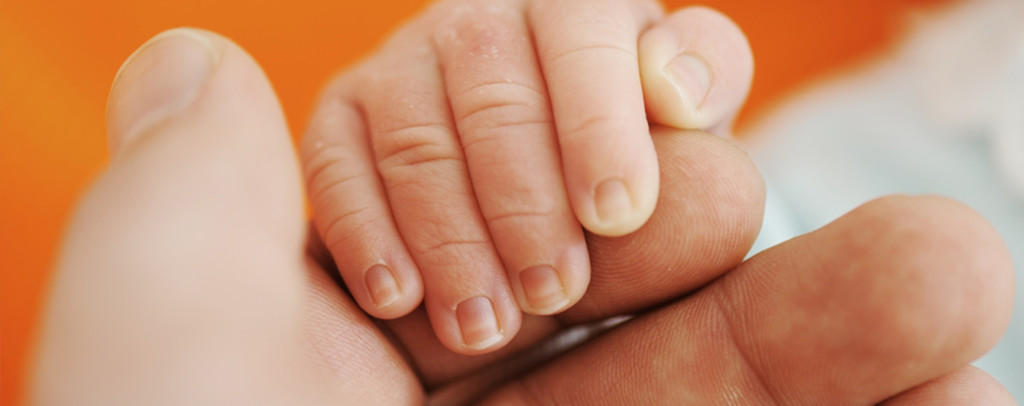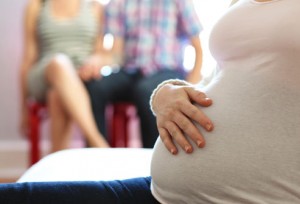Part 2 deals with parentage and presumptions of paternity;
part 3 deal with parentage in cases of assisted reproduction;
part 4 makes further provisions in relation to part 2 and part 3.
Part 2
Head 5: Parentage
Provide along the following lines: (1) A person is the child of his or her parents. (2) The parents of a child are his or her birth mother and biological father unless the child has been adopted within the meaning of the Adoption Act 2010 or the child was born as a result of assisted reproduction, including through surrogacy. (3) Where a child is born as a result of assisted reproduction including through surrogacy, parentage of the child shall be determined in accordance with Part 3.
Notes This Head specifies who are considered to be the parents of a child, and the exceptions to the rule, which are – Ø where a child is adopted, in which case the provisions of the Adoption Act 2010 will apply and all parental responsibilities are transferred to the adopters; and Ø where a child is born through assisted human reproduction techniques, including where a child is born to a surrogate mother, in which case parentage is to be determined under Part 3 of the Scheme.
Head 6: Presumptions of paternity
This Head sets out the presumptions to be used in determining who the biological father of a child is. It is very similar to the rules set out in section 46 of the Status of 15 Children Act 1987, as amended, which is to be repealed. In general, where a married woman has a child during a subsisting marriage, her husband is presumed to be the father (subhead (2)). In other circumstances, a child’s father is presumed to be a man who cohabits with the mother for at least a year provided that the cohabitation does not end (if applicable) more than ten months before the child’s birth, or a man who jointly registers the birth with the mother, or a man who a court has found to be the father (subhead (3)). The presumption of paternity in relation to a husband may be rebutted if the child’s mother has a deed of separation, decree of separation or a separation agreement (subhead (4)). The modification of the current rules is set out in subhead (5). It is to take account of circumstances where a married woman gives birth to a child after she has been separated from her husband for more than 10 months, but does not have a decree of judicial separation, a deed of separation or a separation agreement in place. Subhead (5) expands the grounds for rebuttal of the presumption of paternity in relation to a husband. It would allow a married woman to rebut the presumption of paternity in relation to her child where she can affirm that she and her husband have been separated for more than 10 months. The modifications to the presumptions of paternity (and non paternity) are intended to help secure the right of the child to know his or her identity. This is considered to be in the best interests of the child concerned.
Head 7: Declarations of parentage other than in cases of assisted reproduction
This Head in intended to replace section 35 of the Status of Children Act 1987, which is to be repealed. The purpose of the Head is to allow the court state who, under the law, the legal parents of a child are. It should be noted that a declaration of parentage is not intended solely to be a statement of a child’s genetic origins. However, in the case of a child born other than through assisted reproductive technologies, the two naturally coincide. The Head includes a number of important modifications: unlike Section 35(4) of the 1987 Act, no discretion is given to the court to refuse to hear an application for a declaration of parentage. This is considered to be in the best interests of the child concerned on the grounds that even a well-intentioned decision not to hear a case facilitates the child’s true identity being concealed and may have other unintended negative consequences. Subhead (2) excludes from the scope any child who has been adopted and any child born through assisted reproduction. In the case of a child who has been adopted, the adopters are the legal parents under the Adoption Act 2010. In the case of a child born 18 through assisted reproduction other than surrogacy, legal parentage is assigned under Head 10 and a declaration of parentage may be sought under Head 11. In the case of a child born through surrogacy, parentage may be assigned by the court, subject to clear rules, in an order under Head 13. Subhead (4) provides for information to be provided directly to a minor child if the court considers it appropriate. This is in line with the public policy goal of ensuring that a child of sufficient age and maturity should be informed of, and, where relevant, consulted on, legal proceedings affecting important aspects of her or his life. Subheads (6) and (7) allow the court to require genetic testing under Part 6, and to adjourn proceedings until the testing is carried out. Subhead (8) specifies when the court has jurisdiction. Subhead (10) prevents the court from making a declaration which would result in a child having more than two legally recognised parents.
PART 3 PARENTAGE IN CASES OF ASSISTED REPRODUCTION
Head 8: Interpretation
This clarifies how terms are used in this Part. Where there are references to providing “human reproductive material” or an embryo, this refers only to provision of human reproductive material or an embryo created using that reproductive material for one’s own reproductive purposes. It further specifies that donating gametes or an embryo does not confer parenthood on the donor (subhead (2)). Finally, it disapplies presumptions as to parenthood in relation to the partner of a surrogate (subhead (3)).
Head 9: Deducing of relationships
This provision is to clarify that the relationships determined in accordance with this Part are not confined to the parent-child relationship: the child’s relationship with the broader family (grandparents, siblings, etc.) are also determined by reference to the parent child relationship established by the presumptions in Head 10 or under an order under Head 11 or 13.
Head 10: Parentage in cases of assisted reproduction other than surrogacy
This Head sets out how parentage is determined in the case of a child born through assisted reproduction other than surrogacy. The rule set out is that the birth mother is always considered the mother whether or not she has a genetic connection to the child. This is the same as the “mater semper certa est” principle which until a very recent High Court judgment was considered to apply in Ireland. (See M.R. & Anor-v- An tArd Chláraitheoir & ors [2013] IEHC 91; the case is under appeal to the Supreme Court.) The husband, civil partner or cohabitant of the mother is considered to be the other parent of the child if he or she has given a consent which remains valid at the time the procedure leading to implantation takes place. Subhead (2) specifies that where genetic material is provided by a man only, the child’s parents are the birth mother and the man. This refers to the situation where the embryo is created using a donor egg and the intending father’s sperm. Subhead (3) specifies that where genetic material is provided by a woman only, the child’s parents are the birth mother and a person who was married to, in a civil partnership with, or cohabiting with her and who also consented at the time of conception to becoming a parent of the child. This provision will apply where a woman gives birth to a child conceived using her own eggs and donor sperm. This provision may not be strictly required, as the intention is that the birth mother be recorded as the mother irrespective of genetic connection. It is retained to clarify the policy intention. Subhead (4) specifies that where a man and a woman have both provided genetic material for their own reproductive purposes, they are both the child’s parents. In this case, because there is a genetic link to both parents, there are no explicit conditions as to marriage / cohabitation. Subhead (5) specifies that where no intending parent has provided genetic material for their own reproductive purposes – that is, where an embryo is created using donor egg and donor sperm and implanted in the uterus of the intended mother – then the birth mother is the child’s mother and the child’s other legal parent (if any) is a person who was married to, in a civil partnership with, or cohabiting with the mother and who also consented at the time of conception to becoming a parent of the child 23 Subhead (6) creates a rebuttable presumption of consent on the part of the mother’s spouse, partner or cohabitant to becoming a child’s parent. Any dispute arising would have to be ruled on by a court of competent jurisdiction and evidence provided as to the validity of any consent relied on. Subhead (7) is intended to give these presumptions retrospective effect. With the exception of how the provisions would apply to same-sex couples, the presumptions created here do not differ from those which apply under current law. The birth mother is always presumed to be and is recorded as a child’s mother, her husband (if any) is presumed to be the child’s father – if not, a male partner or cohabitant may acknowledge the child through joint registration, even if he has no genetic connection. Subhead (8) allows the Minister to make regulations on the form that consent must take. This will enable the Minister to specify minimum criteria for a valid consent. The regulations may set out conditions under which consent is considered to be withdrawn. Subhead (9) specifies that a consent is not valid if the intending parent dies. It is not proposed to provide for posthumous conception within this Scheme. The key change this Head makes to current legal provisions is that, in conjunction with Head 11, this would allow an order to be made as to who the child’s legal parents are, which would not be rebuttable. The purpose of this is to ensure that in the event of a dispute between parents, a genetic parent cannot exclude the other parent by obtaining a declaration that s/he is not a parent of the child, nor may a parent repudiate her or his responsibilities to a child on the grounds that they are not genetically connected. This is to secure the best interests of the child by ensuring that he or she has legal links with his or her parents which cannot be undermined either by the parents in the event of dispute, or by any other person (such as in the event of a dispute over succession, for example). It is acknowledged that this could limit the rights of a “known donor” who wishes to establish a legal connection with a child. However, there is a balance of rights to be achieved and the best interests of the child are likely to be served by having legal certainty and security in his or her family unit
Head 11: Declarations of parentage in relation to assisted reproduction other than surrogacy
This proposed new Head is modelled closely on the provision on declarations of parentage generally. The intention is that it will not be necessary for parents to use these provisions. It may be used by the presumed parents to safeguard their roles in relation to the child, including in cases of a dispute between the parents. As indicated in the notes to Head 10, the presumptions set out in that Head are intended to have full retrospective effect since they generally reflect very closely the presumptions which currently benefit couples who have children through AHR other than surrogacy. The exception to the above is where the child is born to a woman cohabiting with or in a civil partnership with another woman. In such a case, the presumptions available under current law are not available to the couple: the mother’s partner cannot be registered as a parent. For these couples, it will be necessary to obtain a declaration of parentage to ensure both of them are assigned legal parentage of the child. It is important to note that subhead (3), where it mentions the possibility that a parent or alleged parent may not be alive, is not intended to apply to posthumous conception – only to the fact that at the time a dispute arises, a parent may have died. As there are complex ethical issues concerning posthumous conception, as well as potentially significant implications for succession / property rights (raising possible constitutional issues), these Heads do not provide for posthumous conception. See also Head 10(9). Subhead (7) proposes that a declaration will act as a blocking order in relation to any alternative attempts to determine the legal parentage of a child born through AHR. This is to ensure the child’s status as the member of a particular family is safeguarded. 26 Subhead (8) is intended as a safeguard for a “known donor” to ensure that he or she does not acquire responsibilities for the child solely by virtue of genetic connection, to the detriment of his or her own family,
Head 12: Parentage in cases of surrogacy
This Head sets out how parentage may be assigned by the court in cases of surrogacy. It sets out the presumptions where the surrogate consents to an order declaring her not to be a parent. The rule is that the parents of the child are a man who provides human reproductive material, and his spouse, civil partner or cohabitant if that person has consented to be a parent of the child (subhead (1)), or a woman who provides human reproductive material and her spouse, civil partner or cohabitant if that person has consented to be a parent of the child (subhead (2)), or a man and woman who have each provided human reproductive material (subhead (3)). If the surrogate does not consent, she will be the child’s mother.
Head 13: Applications to court relating to surrogacy
This Head sets out how the orders a court may make determining the parentage of a child born through surrogacy. The policy intention is that in a surrogacy case, the birth mother will be recorded as the child’s mother. No surrogacy arrangement will be enforceable against her. However, on application to the court by the birth mother or the commissioning parents, or all of them, the court may legally assign parentage to the intending parents. The court may assign parentage on the basis of genetic connection to one of the intending parents and to the spouse, civil partner or cohabiting partner of that person. The consent of any surrogate is essential and she will be the legal mother of the child if she does not consent. Subhead (1) sets out what the court may order, which is that the surrogate is not legally a parent of the child, and that each intending parent who has a genetic connection to the child is a parent, or, if only one intending parent has a genetic connection, then the consenting spouse, civil partner or cohabitant of that parent (if any) is also a parent of the child. Subhead (2) sets out that any of the surrogate or any intending parent may make the application – but each other party, and any other person the court considers appropriate, must be served with notice of the application (subhead (7)). Subhead (3) allows the making of an application even where any of the relevant parties has died. Where a man and a woman both provide the genetic material for their own reproductive purposes to create an embryo, only they and the surrogate may apply for a declaration as to parentage of the child (subhead (4)). Subhead (5) limits the timeframe for the making of an application to no earlier than 30 days after the child’s birth and not later than six months after. It is considered that a birth mother should have sufficient time to recover from the rigours of pregnancy and childbirth before participating in proceedings. Subhead (6) modifies this rule in relation to pre-commencement surrogacy arrangements so that an application may be made up to 2 years after commencement of the provision, and allows the court to accept an application even later than this if the court considers there are special circumstances which must be taken into account. An application must be accompanied by evidence of the genetic relationship of one of the intended parents to the child and evidence that the surrogate is not the genetic mother of the child (subhead (8)). “Traditional surrogacy”, in which a woman becomes pregnant using her own eggs with the intention of giving up the child to commissioning parents, is excluded from the scope of these legislative proposals. Subhead (9) mandates the court to make the order applied for if it is satisfied that the surrogate consents and that at least one of the intending parents has a genetic link to the child. Where the court makes a declaration, the parents named in that declaration are deemed to be the parents of the child from the date of the child’s birth. The declaration must name each person who is a parent of the child (subhead (13)), 32 Subheads (11) and (12) make certain provisions as to consent. Subhead (11) establishes that a surrogacy arrangement – which is entered into before the surrogate becomes pregnant – cannot be used as evidence of the surrogate’s consent. The consent of the surrogate is valid only if it is freely given when the application is made. However, it may be used as evidence of the consent of either of the intending parents. The court may waive the consent of a surrogate who is deceased or cannot be traced (subhead (12)). Subhead (14) confers jurisdiction if the child is born in the State or a parent is ordinarily resident in or a citizen of the State. Subhead (15) bans the making of a declaration where a child has been adopted. Subhead (16) restricts the court from making a declaration which would give a child more than two parents. Subheads (17), (18) and (19) ban the court from making any declaration under the section if the surrogate is not of at least the prescribed age (18 for pre-commencement, 24 for postcommencement), either of the intending parents has not attained the age of 21, or, in relation to an arrangement entered after the Scheme has legal effect, a payment forbidden under Head 18. Subhead (20) provides for rules of court on the information that must be contained in any application for a declaration under the Head.
PART 4 FURTHER PROVISIONS RELATING TO PARTS 2 AND 3
Head 14: Additional orders by the court
This provision is intended to streamline proceedings so that where a parent applies for a declaration of parentage and is not a guardian or entitled to lawful custody of the child, the court may, where appropriate, direct the person to make an application for guardianship and custody (subhead (1)). Subhead (2) requires the court to consider and determine such applications in the same proceedings as the application for the declaration. This is proposed as a mandatory requirement, on the grounds that the child’s best interests (and those of the parents or any other parties) will be served by having all relevant proceedings heard in the round and clarity provided as to who has the rights and duties to take case of the child. It would also promote efficiency by reducing the requirement for multiple proceedings and court hearings.
Head 15: Role of the Attorney General
Under present law, a determination by the court under section 35 of the Status of Children Act 1987 is binding on the State if the Attorney General is a party to proceedings. This Head is intended to have the effects section 35(5), (6) and part of (9) of the 1987 Act currently have. One proposed modification is that subhead (3) provides that a declaration shall be binding on the State where the Attorney General is a party to or is on notice of proceedings. The intention is that where the Attorney General, having been put on notice and reviewed the relevant material, determines that there is no overriding matter of public interest requiring that she be a party, the proceedings will be binding on the State without the requirement for further action on her part. This is in the interests of efficiency and reducing costs.
Head 16: Effect of declaration of parentage
This Head mirrors the balance of section 35(9) of the 1987 Act in subhead (1) including that the declaration is binding on parties to proceedings. Subhead (2) sets out the effect of the declaration. It is intentionally silent as to guardianship – a parent who would be entitled to guardianship by virtue of the provisions of Heads 30, 37 and 38 will have proof that s/he is so entitled on the making of the declaration, and a parent who would not be so entitled has all the rights and duties of a non-guardian parent – including the right to apply for guardianship if s/he wishes (if the court has not already directed her or him to apply, under Head 14).




